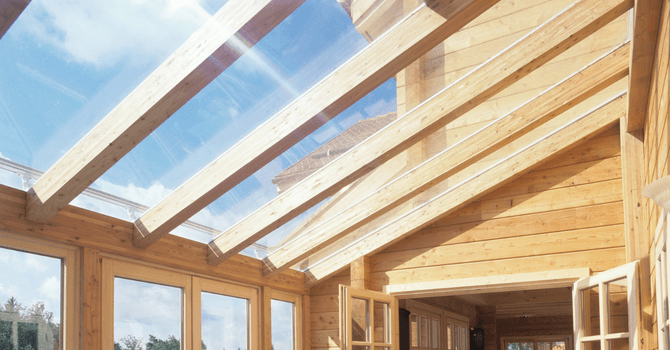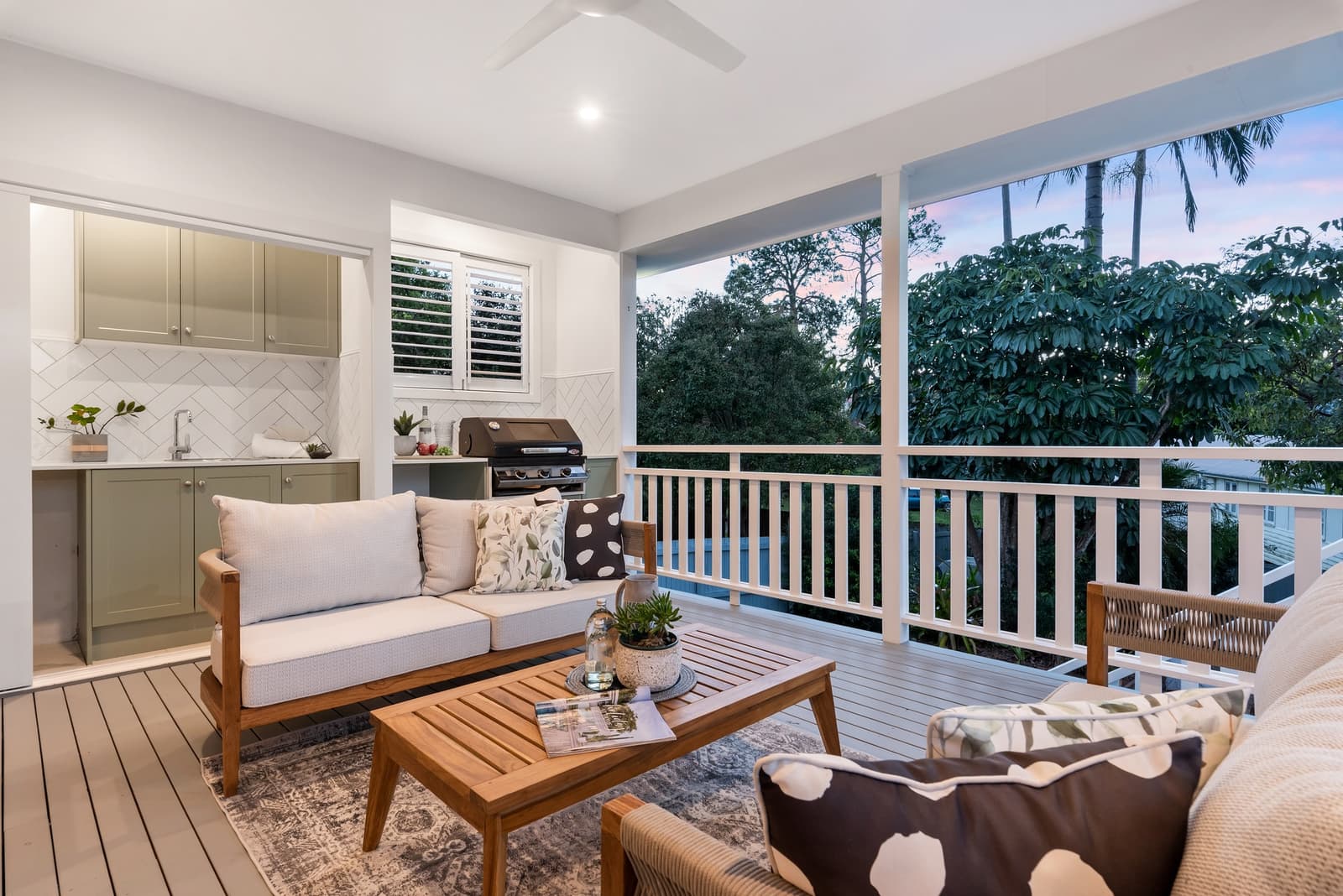Building a Home Addition in Toronto - Everything You Need to Know
By Paul Riopel
Updated on February 24, 2025

Building an extension on your home can add some serious value while welcoming space for additional family members or loved ones. Of course, a home addition or added room is a huge renovation to take on, as plenty of planning, preparation, and skilled labour must take place to complete the job.
But before you start doing research regarding local contractors to work with, or you grab the hammer and nails to build the addition yourself, it is important that you consider local rules regarding adding rooms or floors onto your home. If you are living in the city of Toronto, there are specific regulations in place for all construction projects.
Exterior renovations don’t only affect the well-being of yourself and your family, but they also impact your neighbours and community. As a homeowner, you are responsible for providing a safe and professional space for those working on your home, and in turn, maintaining a considerate environment for the homes surrounding your own. If you’re living in the city of Toronto and are interested in a home extension, read on for all the vital details.
Everything to Know About Building an Extension in Toronto
The Basics of a Home Extension

Source : Builda Construction Inc.
A home extension doesn’t only consist of building another level to your house. There are several types of home additions, and these include the following:
Building a deck or balcony on the façade of your home.
Constructing a second storey or a sunroom.
Building a new garage attached to or in addition to your home.
Since you'll be building or adding onto the exterior of your home, it is important to keep your neighbours informed. Especially if you’re living in a close-knit Toronto community, it's recommended that you let your neighbours know about your planned work by either writing to them or popping by for a visit.
If you are working with a contractor, make sure you have discussed the length of time it will take for the addition to be completed. This way, you can let your neighbours know how long this project will take. Further, provide your neighbours with a way to get in touch with you if necessary. If your neighbours are well informed, it is more likely they will be understanding towards noise or any disturbances created by your renovation.
Speaking of noise, in the city of Toronto there is a Noise Bylaw that permits the operation of construction equipment between Monday and Friday and during the hours of 7:00 AM and 7:00 PM only.
This Bylaw also states that you are not allowed to make noise on Sundays or during statutory holidays. Even during the hours when construction is allowed, the noise levels should be kept to a minimum as a considerate effort. Take this into consideration when you are thinking about the length of the entire renovation.
Toronto Home Addition: Permits, Rules, and Regulations
Under the City of Toronto’s Building Code Act, you are required to get a building permit for any construction or demolition of a building, an addition or material alteration. Further, there are many municipal regulations in place, and therefore, building an addition will have to comply with zoning as well as plumbing and electrical systems rules. It is important that you consider how the zoning, plumbing or electricity will be affected in relation to your home renovation project before you start.
When submitting a permit application for an addition, extension, top floor and so on, you must include a set of drawings which aptly detail the dimensions and layout of the work you plan on doing.
This will need to be in the shape of a detailed site plan as well as a floor plan. If you don’t feel artistic enough to complete these drawings or the renovation plan, and you choose to hire a designer, make sure to include their name, registration number, qualification identification number, as well as their signature and a statement detailing that they have agreed to take responsibility for the design.
As we mentioned, if your addition interferes with or requires additional plumbing, a drain or water services, you will need to apply for another permit. However, drawings are not necessary for this part of the application. For the specifics of what is required with your permit application, you can check here.
How much does it cost to build a new house extension?
Type of Project | Average Cost |
Building up: home addition | $200–$400 per square foot |
Storey transformation | $200–$500 per square foot |
Two-storey addition (first floor) | $360–$480 per square foot |
Two-storey addition (second floor) | $210–$240 per square foot |
When estimating the price of your home addition, please keep in mind that prices in Toronto can fluctuate significantly due to factors like contractor availability, permit complexities, and neighbourhood trends.
Single-Storey Addition Prices
Single-storey home additions typically cost between $200 to $500 per square foot, depending on design complexity, materials, and finishing details. For those considering a basement, finishing work can add $60 to $100 per square foot. Larger projects often benefit from economies of scale, potentially making a single, extensive renovation more cost-effective than several smaller ones.
Two-Storey Addition Prices
Two-storey additions are priced differently, with ground-floor changes averaging $360 to $480 per square foot, while second-floor changes are generally less expensive at $210 to $240 per square foot due to reduced structural work. Regardless of project size, budgeting at least $70,000 is essential, with costs often reaching $170,000 to $300,000.
Building an Addition Over Relocation: A Growing Toronto Trend
Canada’s rising home prices are a wake-up call, especially for many of the residents of Toronto. A growing trend in the city of Toronto, as well as the GTA, is to purchase a home as a long-term investment, as prices and taxes for land transfers continue to increase. This is leading home-buyers and owners to renovate, adding additions, garages and rooms to pre-existing properties rather than moving.
Your financial map will change over time, alongside your family structure and size, your wants and needs and even potentially market and home renovation trends. These reasons alone could have you expanding and adding an addition to your home, instead of packing up and looking for the next place.
Further, if you were ultimately unhappy with the neighbourhood or additional factors, renovating your home can greatly increase its resale value. Completing a home renovation could pay off in the long run.
What are the main steps of a home addition?

Source : Architecture & Design Mario Fortin
Step One: Budgeting
The first step in any home extension or addition project is setting a clear budget. Large-scale renovations often come with unexpected challenges, so it's wise to factor in a contingency for mishaps or last-minute changes. To define your budget, consider key factors such as the extension's size and shape, the materials you plan to use, and the professionals you’ll hire, including contractors and architects. Additionally, the construction process and whether the project will be turnkey will influence the overall cost. A simple way to estimate your budget is by calculating the price per square foot.
Step Two: Submitting Your Building Permit Request
Before launching into construction, it’s essential to research and secure the necessary building permits for your project. Permits vary by municipality, and obtaining approval can take time, so it’s best to submit your request well before the anticipated start date. Proper planning, including setting a realistic project timeline, will help avoid costly delays and ensure the project complies with local regulations.
Step Three: Deciding on the Type of Addition You Want
When planning your home extension, you'll need to choose the type of construction that suits your property and budget. The three main options are:
Building Up: This involves adding an additional storey by removing the existing roof and constructing a new one atop the added level.
Building Out: This expands the footprint of your home by extending space to the side, front, or back, requiring a new foundation in the extended area.
Detached Extension: This independent structure, like a guesthouse, studio, or garage, offers flexibility without modifying your existing home.
Foundations can vary based on project needs and budget, from full basements to concrete slabs or pole footings. Each approach comes with unique considerations for insulation, stability, and cost.
Step Four: Finding the Right Contractor/Architect
Given the complexity of home extensions, most homeowners choose to work with professionals rather than tackling the project alone. The right contractor can guide you through permits, budgeting, material selection, and construction while coordinating with other experts. Architects, on the other hand, are crucial for creating blueprints, ensuring structural integrity, and sometimes offering 3D renderings of the project. Depending on the project's scope, you may also need a structural engineer. Collaboration between these professionals can make your project seamless and successful.
Step Five: Building Inspections
Home additions and extensions often require periodic building inspections to ensure compliance with safety and construction standards. Inspections may cover areas such as foundation work, structural framing, insulation, plumbing, electrical systems, and HVAC. The contractor you hire can often handle scheduling and coordination for these inspections. The project typically concludes with a final inspection of both the interior and exterior to confirm that everything meets legal and safety requirements.
FAQ
What is the cheapest home addition?
If you're looking for an affordable option to expand your home, the bump-out is a great choice. It adds extra space to an existing room without the high costs of a full addition since it doesn’t require a new foundation or major structural changes. Whether you're extending your kitchen, bathroom, or living area, a bump-out can provide the extra square footage you need while keeping costs manageable.
Where can I find builders/companies for my home addition project?
You can find them on our site, RenoQuotes.com! All you need to do is submit your renovation project and receive three free quotes from certified contractors in your area.
Looking for something else?
Related articles
The latest industry news, interviews, technologies, and resources.

Editorial Team
•02 May 2025
In this home adaptation financial guide, we’ll explore the expenses associated with essential home improvements, enhancing accessibility and functionality. How much should you budget to install a wheelchair ramp or upgrade a bathroom? What factors affect the cost of home adaptations? This guide addresses these questions and more, helping you plan your project as efficiently as possible.

Editorial Team
•08 May 2025
Do you live in a typical Quebec bungalow and feel like the space no longer suits your lifestyle? Maybe your family is growing, working from home is prompting you to rethink your layout, or you simply want to enjoy a more comfortable space. In 2025, extending your home has become an increasingly popular solution, especially given the rising cost of real estate and the expenses involved in moving.

Cynthia Pigeon
•07 Nov 2023
Are you looking for a robust roofing material that’s also resistant to harsh weather conditions and allows you to fully benefit from natural light? Then it’s about time you consider installing clear roof panels!

Editorial Team
•23 Jun 2025
If you have a large yard, and therefore, perform a significant amount of yard maintenance, chances are you know a thing or two about dragging electrical wires along your lawn. Now, did you know that outlets can be mounted on soil-planted posts and wires can be buried beneath your feet? You can save yourself the hassle and frustration of pulling cords across the grass by running power underground!

Editorial Team
•20 Jul 2024
Composite wood is a great material to consider for building an outdoor structure. It’s a fair alternative to natural wood given its optimized composition designed to withstand the ever-changing weather conditions.